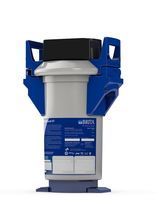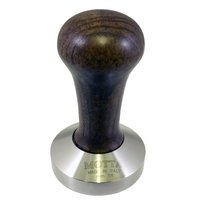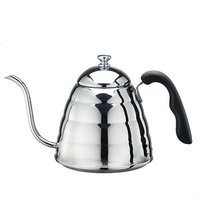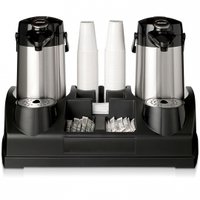Resources
This section will expand as we add more content in the form of how to videos, recipe ideas, origin based microlots and technical information - for now here are some tips for opening a succesful coffee based business...
Top tips for opening a business that serves coffee
The coffee market is growing - according to Allegra, the total coffee shop market is estimated at over 18,000 outlets and £7.2 billion turnover (2014). That’s a 10.7% growth in turnover and 7.8% in outlets in the last year. This growth is expected to continue in the next 5 years, making the coffee business a highly attractive one.
With this growth in the coffee shop market, consumers have now become accustomed to better quality coffee and are increasingly demanding the same range of speciality coffee drinks wherever they are.
Competition is fierce - you’ll want to survive and thrive! These tips will help, but they are not specific to your plans – you may want to call us to arrange a consultation to see if we can help you to succeed.
- Try to offer something a little different
You will likely be one of many in a crowded market place – what is it that will mean customers will choose you over the competition – or want to travel to visit you as a destination rather than stay at home?
This might be based on marketing to get them through the door, but your product needs to be exceptional to keep them coming back. Themed offerings, unusual drink recipes that work, fantastic customer service, etc…
Coffee based businesses are relatively easy to acquire but given the churn in coffee shop ownership, difficult to be successful at – the key is to remember that you are in a customer service business so your people skills are paramount – your product may be excellent, but if you deliver it with anything less than a smile you are unlikely to inspire repeat custom…
If you have particular strengths, use and apply them to make the most of your opportunity - Think about what your Customer would like
You will no doubt have strong ideas about what you want your business to look like, after all it is your baby that has been long in the planning - but bear in mind that your target audience will have their own set of criteria – it is your ability to meet these needs that will ultimately define whether your business is a success or an expensive and stressful mistake.
Whether you’re relying on passing traffic or creating a destination, be sure to know who your customers are likely to be and find out what they might need to make sure they frequent your business. The facilities offered, menu range, price points, specific services, opening hours and promotional initiatives all need to be tailored to suit the customer.
For example, office workers might expect fast takeaway service, free wifi, affordable prices and ethical messaging; in contrast, mums may be willing to pay more for a child friendly environment, table service, spacious facilities, buggy storage and a more family-oriented menu.
Put your personal preferences in check and look at it objectively as if you were from your target audience – ask a friend to be a sounding board to make sure you are not looking at it with rose tinted glasses – alternatively call us and arrange a consultation, we won’t be brutal, just honest... - Knowledge is power
Coffee will be your business – find out about it so you can talk to your customer’s knowledgably – show you care about your product not just their money!!
There is no doubt that specialist artisan café culture is on the rise – even the branded chains are in on the act too - widening your coffee credentials can be a point of difference between you and your competitors – join the so called ‘third wave’!
The understanding of consumers about social responsibility and sustainability has increased immeasurably over the past 5 years – no longer is it a nice mark to have, now it really means something to lots of people – it can show the world who you are, what you believe in and what you are prepared to do about it!
Coffee knowledge has never been more important or more easily accessible – here are a few links to get you thinking – there are many more out there…
• Sprudge http://sprudge.com/
• Barista Magazine http://baristamagazine.com/
• Caffe Culture http://www.caffeculture.com/
• Fresh Cup freshcup.com
• Asher Yaron TEDxUbud talk - What is the Competition up to?
Competitor research is critical – don’t limit it to other coffee shops as consumers can substitute a coffee for other competing products – remember, coffee varieties such as cappuccino, latte and espresso are becoming a commodity expected in more and more locations – even the local pub, hair salons and garage forecourts should be factored in.
Ask yourself…
• Who is my target market in this location?
• Are they already being catered for elsewhere?
• What can you offer that’s different and appealing?
• What businesses do you admire – why are they successful?
• Has any similar business recently closed in the area – if so, why?
• Does anyone just provide coffee? If not, what other things do they offer?
• What other complementary items would fit in this area?
Get out there at all times of the day – see who is around when – monitor the amount of passing traffic – look at the surrounding area there may be a lot of houses close by, but why would they come to your business?
This is an iterative process that will need to be revisited regularly if you are to stay ahead of your competition and keep your offering relevant – talking to your customers is a great way of finding out what works and what doesn’t. - Choose your Partners on service and quality – NOT price
Choose your suppliers carefully – as coffee will be a large part of your business, this choice is an important one. You’ll come to rely on them to keep the business going.
You will want to be sure that they will deliver what you need when you need it, so you never run out. Good suppliers will go the extra mile to help to promote your business, and will have a program of training and technical back-up to make sure your machinery and staff are both well supported and fit for purpose.
Back-up and customer service are essential to your business survival – quality drinks consistently delivered will build a reputation – shopping around for the cheapest supplier will lead to variable quality and an inconsistent offering – never a good idea if you want to develop repeat customers – one bad experience is usually enough to stop them coming in – getting them back is nigh on impossible.
There are lots of great coffee suppliers out there (as well as lots of not so great ones!) and the choice can seem too much. At Total Beverage Solutions, we have a wide range of products to help you run your business as well as great back-up from real people who can come on that journey with you. - Select the right equipment options for your business
Investing in the right equipment is a minefield, especially when you don’t know exactly how the business will evolve over time. You may prefer to own your equipment or you may consider the flexibility of rental.
When you are looking at fully automatic bean to cup machinery with a relatively short economic life span, passing the risk of support and obsolescence to your supplier may be a good if slightly more expensive choice.
However, if you are looking at reputable traditional espresso machines and grinders, these can last for many years if looked after – the economic argument for rental only really stacks up for the supplier in the long run.
For example, a typical 2 group machine with grinder will come in at no more than £160 + vat per month – even if you factor in servicing and boiler safety checks, you can look at the table below to see the myth behind the benefit of service rental:
Year Rental Lease
1 £1,920 £2,320
2 £1,921 £2,320
3 £1,920 £2,320
4 £1,920 £400
5 £1,920 £400
6 £1,920 £400
TOTAL £11,520 £8,160
This annual disparity continues as the life of the machine extends – as long as you have suitable technical back-up, we would argue that buying is always the best option in the long term. Did we mention that our founder is an accountant?
Don’t even get him started on ‘free loan’ machinery – yes, it’s always nice to get something for ‘free’, but these deals are anything but - this option is most widely available for back of house bulk coffee production, but some suppliers will now offer traditional espresso machines too.
Beware of the small print – to make it stack up your coffee supplier will hike the coffee price and usually require minimum orders. But what happens if you buy more than the minimum at the inflated price? You will be paying over the odds for your equipment. - What’s the risk of substitute products – what kind of menu do you need?
You’ll need basic drinks like espresso, americano, latte and cappuccino to even be considered a suitable venue – but then what! The flat white is becoming more widespread thanks to the branded chains, even if most people don’t really know what it is yet!
If coffee is your main focus, don’t overlook the resurgence of filter coffee varieties – the rediscovery of freshness and taste above mass produced ‘speciality’ drinks together with the myriad ways of making this beverage have added interest to many a coffee shop. But if you don’t want to go into this level of geekery then cafetieres or pour over filter machine may suffice.
Should you offer other drinks like leaf tea, frappes, milkshakes, smoothies, a wide range of chocolate products, cans of juice (before the tax comes in!) and water to capture more people, or do these not fit with your target audience.
Don’t forget about the ethics of what you are supplying – shout about sustainability and provenance/origins at point of sale to highlight your credentials.
Evolve your menu with specials – keep the ones that work and forget about those that don’t –see what your competitors are up to and stretch them to keep up with you…
Target the offering to your audience – if you don’t get excited about coffee stick to mass produced but ethically sourced great quality drinks – you won’t be able to fake enthusiasm to the customers who know…
Finally, don’t get carried away and keep it simple – you’ll end up giving yourself unnecessary headaches when most of your sales are from 3 or 4 drink staples. - Training, Training, Training
Investment in staff training is a great way to show how important they are to the success of your business – it will make your staff more competent, more motivated and will result in happy satisfied customers – nowhere is training more important than in a customer facing business.
After all your staff can be a point of difference in their own right as your competitors do not have them you do – treat them right, pay them well, train them to delight and you are well on your way to a sustainable business model…
Training on the basics of coffee and other beverage production is a minimum requirement – arguably training to enhance the ‘customer experience’ is as important as training in how to make the drinks consistently across all staff members…
Training to understand why you should keep your coffee fresh and why it is important to make your drinks on clean well maintained equipment is also not to be overlooked. If you want to really stand out from the crowd embed a training program that will teach your staff latte art, brew skills and trainer training to keep up the standards your customers will come to expect. - Marketing support and/or recognised brands
Good marketing outside will catch attention - a picture speaks a thousand words, so striking visuals are great for influencing those potential customers to come on in.
Once they are in you need to let them know what’s on offer – a menu board and marketing messages are a great way to up-sell to higher margin drinks. Change your marketing message seasonally to make sure you are reaching your full potential.
You can do this by either;
- producing your own bespoke marketing materials (with the help of your supplier)
- using off-the-shelf brand support from the coffee brand you choose to use; or
- by using coffee from an internationally recognised coffee brand in the hope that this will drive footfall based on perceived quality as a result of other positive customer experiences with the same brand
Finally, consistently great drinks, a pleasurable experience and friendly well trained staff will keep customers coming back - your mission is to constantly enhance quality so that your customers can be confident of a repeatable delight! - Keep it fresh
Smart business owners know that to stand still is to languish at the back – trends overtake you if you are not alert and competitors enter your market so you need to evolve and keep it fresh.
Keep an eye on the numbers (sales, transactions, average spend) – any adverse changes need addressing and any positive changes need reinforcing – take immediate action as every minute you don’t you are losing out on potential profit…
Review your offering – cut things from your menu that aren’t selling as they are taking up space and money – promote things that are selling to turn over the stock quicker - this will help with freshness and quality and create a virtuous circle.
Talk to your customers – they are a great source of information about why things aren’t selling – it might be a mismatch between the marketing and the finished product – address this and you might find you sell loads more of something that once languished on the shelf…
Read relevant stuff, visit your competition, visit other similar businesses in other locations – there is no better idea than one that has proven successful somewhere else – no need to reinvent the wheel single handed every time – reduce, reuse, recycle.










